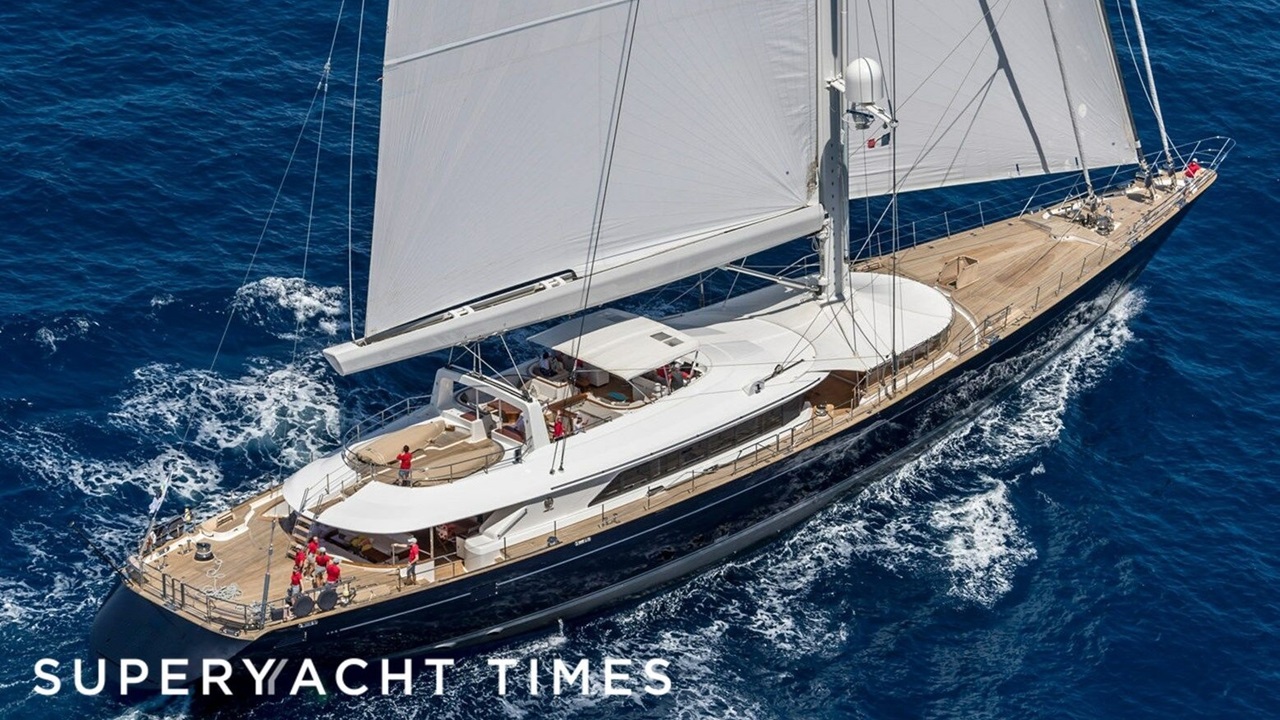
News is in that Mike Lynch, the founder of enterprise software company Autonomy, is missing at sea as his yacht the Bayesian sank outside Palermo in Sicily after being struck by a tornado.
Also missing is Lynch's 18 year old daughter Hannah, the chairman of Morgan Stanley International, Jonathan Bloomer, a close friend of Lynch, and four others. Fourteen people survived the freak storm.
Lynch had in June been acquitted of massive fraud by a San Francisco court, and strangely enough, his co-defendent, Stephen Chamberlain who was a former vice president of finance at Autonomy, was hit by a car just two days before the Bayesian sunk.
Chamberlain died in the accident, which is not related to the yacht sinking.
The tragedies bring back past stories of one of the most disastrous deals ever in the technology business, namely Hewlett Packard's 2011 buy of Britain's Autonomy.
It was a big deal at the time too, valued at US$11 billion. Lynch was big on technology that's based on "something called Bayesian inference, all very mathematical and clever" as he told iTnews at the time.
Long story short, the HP-Autonomy deal soured pretty fast after it was done, due to what was described as a significant decline in licensing revenue. Lynch had to leave, and in 2012 the whole thing went very legal.
The then chief executive of HP Meg Whitman said the tech giant had been lied to ahead of the deal and that eventually set in motion a protracted court battle on both sides of the Atlantic.
Whitman's predecessor Leo Apotheker lost his job over the Autonomy deal, and the court case came to trial as Lynch was extradited to the United States last year to face trial. He faced a lengthy prison sentence if found guilty, of up to 25 years behind bars.
Prior to that, Autonomy's chief financial officer Sushovan Hussein was jailed in 2019 for five years as fraud charges against him were held up.
Lynch on the other hand successfully defended himself and walked out of the San Francisco court, acquitted on all 15 charges. He maintained that HP didn't know what it was doing when the tech giant bought Autonomy.
The US legal win probably wouldn't have been the end of his legal troubles, as Lynch and Hussain lost a UK civil case against them brought by HP in 2022, with £4 billion sought in damages.
Autonomy's auditors, Deloitte, copped a £15 million fine in 2020 for failing to act with integrity and objectivity.
15 Comments
Ron Holland isn't known for pushing the boundaries - quite the opposite (think: Lion)
We have to think about the extra energy going into the oceans, particularly in summer. Joules per square nautical mile, times time. Cyclones will break records, then break them again and again. And localised twister events - tornados, dust-devils, water-spouts - ate likely to become more fierce, and probably more prevalent.
Mike Lynch missing? On top of "Stephen Chamberlain, Mike Lynch’s co-defendant in a US fraud trial, has died after being hit by a car while out running in Cambridgeshire... the former vice-president of finance at British software firm Autonomy, was hit on Saturday morning"
Yes Dr Evil just dialled up a WaterSpout which flattened the yacht..
Here is some more information which might help you get out of the rabbit hole..
Strange things happen at sea on luxury yachts, which are designed to handle some heavy weather.
"Robert Maxwell, the flamboyant head of one of the world's biggest media empires, was discovered dead in the sea yesterday after disappearing from his yacht off the Canary Islands .Mr Maxwell's body was found by a fishing boat floating 19 to 20 miles from Gando on the other side of the neighbouring island of Gran Canaria - more than 100 miles from the obvious route between the points of departure and arrival. Asked to explain how the body could have got there, Mr Delgado replied: "That's a good question.""
And of course, recently:
"Door left open thought to be the cause of sinking of luxury £16m superyacht off Greek island... left a side door open allowing an influx of water when the weather in the area “turned”
I guess we'll know what sank this boat in due course.
Yes as you said the left side door open?
Pure speculation, but the original Holland design was for a 2 masted vessel which usually means shorter masts. This one was the only single master built for this design with an overly high mast. Assuming no significant hull penetration when the mast snapped then maybe the righting moment of the keel could not overcome the weight of the extra tall and weighty fallen mast ??
That seems to be the talk in SY circles.
Same thing happened here a while back
https://www.thecoast.net.nz/news/wild-weather-see-the-aftermath-left-be…
https://www.rnz.co.nz/news/national/396866/tornado-that-hit-marina-defi…
Thanks for the links , very interesting - the second video shows in the top right hand corner a super yacht mast heeling to the horizontal but then righting - probably proves the point.
She was called Encore.
Yes, that was what I was comparing it to.
I have done passages on this type of yacht; they have their fortes. They can outrun cyclones, which is useful. And they're generally easier on their crew, most of the time. The problem comes - always with sailing - when the horsepower outguns your ability to react; both speed-wise and power-wise. You have to apply relatively significant horsepower (I hear the next-door vessel in yesterdays' case was juggling position using its motor, even though anchored) and 'now'.
That knockdown in the video is quite something.
But it's a temporary thing. I.e. the initial wind gust generates momentum that carries the mast to 90'ish before righting forces assert themselves and the mast swings back upright'ish.
If the wind were continuous, the mast may stay as far down 70 or 80 degrees? Looking at Bayesian's deck layout, 70 or 80 degrees would probably allow water to get in if a sizable enough opening, of which there are a few, were open. At sea, in poor conditions, everything would battened down and locked up tight. But at anchor? In a sudden squall? Quite likely not. My guess is that's a major part of the story. But other factors will emerge.
Putting such large rigs on racing maxis with their deep bulb swing keels and experienced sailing crew is one thing. But on superyachts with their shallow drafts and limited deck / engineering crew? Quite another. Was it a disaster waiting to happen? And after this, will we all look at the design and wonder why such a now obvious issue was ever allowed off the drawing board.
edit: eyewitness account from the captain moored beside her: "Describing the moment, the storm hit, he [Karsten Borner] told Italian news outlet Rai the superyacht tipped to its side and sank within "a few minutes"". https://www.bbc.com/news/articles/cwyxqqp42d5o. So the huge rig, with just 4m below the waterline (centreboard was up), saw her knocked flat, water ingress and down she went. Sad but quite boring. Indicative of a design oversight? Or a freak accident?
....
The fact that so many were able to get into the life raft suggests there was time before the vessel sank to do this. Or, they jumped and were picked up quickly suggesting a short and brief event with the sea state not impacting the pickups.
If the vessel was knocked flat by the wind, there would have been sufficient weight in the keel to right her. (Turning completely over without a heavy sea state is extremely unlikely.) Maybe the hatches weren't battened down and sufficient water entered? She'd need to flat for some time to allow for that to happen and all her main hatches are amidship. If it did, maybe this would sink her? Unlikely, but possible.
Wild guess on my part: That huge rig would have considerable windage. A water spout contains considerable mass, usually more than a land based tornado, as they suck up water. Put those two together and the rig could have been ripped out, or ripped apart, doing damage to the hull. Sufficient damage to cause her to sink, but not that quickly.
It certainly won't be a 'run of the mill' sinking. Something remarkable occurred. Given the sudden nature of the storm, a lack of preparedness was probably a contributing factor.
I guess we'll know shortly.
Edit: Theories and info from sailors, nautical engineers, naval architects, etc. here: https://forums.sailinganarchy.com/threads/56m-luxury-sailing-yacht-sink…
I suggest she was not in a configuration to survive the event that occurred, though could have survived much worse if prepared and at sea. Yachts are commonly lost close to shore vs at sea.
A sudden unexpected weather event caused an ingress of water and loss of buoyancy. Simple yet unexpected.
Does this yacht have a lifting keel - like many of this size do - and was it in the shoal position that night when anchored?
The problem with these yacht, is that the client often has a long list of 'features' that they want - and they are mostly ones that are not good for sea-worthiness. Things like helicopters pads, large pools, 'garages' for multiple and large tenders, lots of heavy stone surfaces, lots of glass and large windows - which results something more like a luxury house having a hull designed around it.
Competent sailing yachts start with hull design and then have the interior and systems designed to fit within.
Ultimately, whilst their size endows them with a certain ability to withstand adverse weather, many of these superyachts are absolute barges, with limited seagoing ability.
Yes, it was a centreboarder - so the primary question is.... was it up or down?
But this was a well-enough-found vessel - no barge. Perhaps closing of doors/hatches/portholes might have helped? A vessel like this should be able to withstand solid water for a short period, if closed. I suspect the design-range for the rig (windage) will come under scrutiny; often N/A is separate from rig-design.

We welcome your comments below. If you are not already registered, please register to comment.
Remember we welcome robust, respectful and insightful debate. We don't welcome abusive or defamatory comments and will de-register those repeatedly making such comments. Our current comment policy is here.